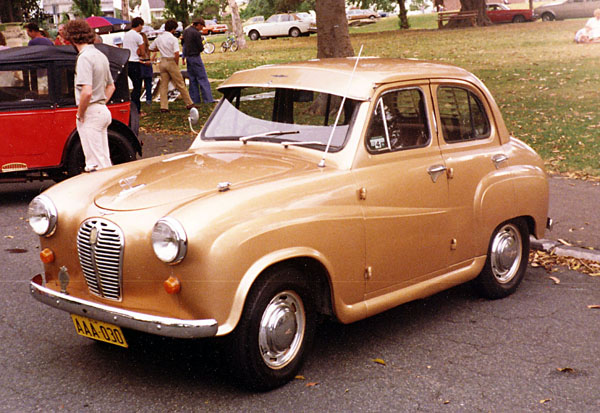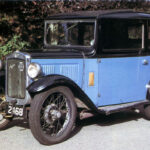During the Second World War the Austin plant at Longbridge, about 11 kilometres South of Birmingham, was fully engaged in the production of aircraft, trucks and ambulances. Leonard Lord, heir apparent to Lord Austin, who took over control of Austin production in 1939, wasted no time in announcing Austin’s first post war model in September 1944 well before the end of hostilities. This was the Austin Sixteen which was really the pre-war Austin Twelve but fitted with a 2.2-litre overhead valve four-cylinder engine. It was Longbridge’s first car to use overhead valves, since previously rather dated side valves had been considered sufficient.
Another overdue innovation was the use of an independent front suspension. The remaining Eight, Ten and Twelve were carried over from pre-war days and certainly looked it. In 1947 the A40 with a new overhead valve 1200cc four-cylinder engine replaced the Ten and Twelve but still no sign of a small car to replace the Eight. Whilst the A40 employed an independent front end it retained a separate chassis rather than the unitary construction which was becoming increasingly popular.
Longbridge’s post-war small car, the Austin A30, introduced in 1952 had an 803cc engine which was increased to 948cc in 1957 and redesignated as A35, remained in production until 1962. Not only did the model represent Longbridge’s first foray into unitary construction but Austin’s answer to the Morris Minor had a new engine and gearbox which was destined for a long production life. Derivatives of this engine eventually found their way into the Mini and the Austin Metro.
The A30 was a lighter car than the Morris Minor and turned in better fuel consumption figures but its hydromechanical brakes and narrow track made it somewhat less stable on the road particularly in windy conditions. First released as a four-door sedan, this was followed by a two-door version from late 1953 and later a station wagon form followed.
During its production life from 1952 to 1956 a total of 225,000 vehicles in various forms were manufactured.










